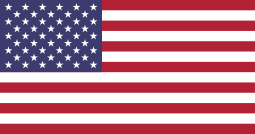Slow Feeding for Ulcer Prevention
The AAEP estimates that 30% of all adult horses, 60% of performance horses and 90% of race horses suffer from gastric ulcers. A number of things can cause equine ulcers: NSAIDS, stress, performance, and feed deprivation. The rate of gastric ulcers is much lower in horses allowed to graze 24/7. Slow feed hay nets simulate the grazing process. By introducing slow feeding into your horse's daily routine, you can help prevent ulcers and alleviate some bad behaviors as well.
The Culprit: Stomach Acid
The main cause of gastric ulcers in equines is stomach acid. Unlike humans, who produce stomach acid only when we eat, your horse is continuously producing acid regardless if his stomach is empty or full. Horses are designed by nature to constantly graze so that they can continuously produce saliva and keep their gut lined with food, the 2 crucial functions that keep stomach acid at bay. When your horse is constantly nibbling on forage, hay or grass help soak up acid. In addition, your horse produces saliva while chewing. Saliva is a natural buffer or antacid that helps keep hydrochloric acid in check.
If your horse is fed 2 meals a day with nothing to munch on in between, his gastric acid is still churning and burning on an empty stomach. With no saliva or food matter to protect his stomach, the acid slowly eats away the stomach wall. If this continues daily, the stomach lining eventually becomes damaged and a sore emerges called a gastric ulcer.
In as little as 5 days, a gastric ulcer can develop and begin wreaking havoc on your horse's digestive system. Many times unwanted behaviors accompany an ulcer. In a desperate attempt to create saliva for relief, many horses will resort to chewing on anything they can find: bark, fence posts, barn wood etc.
Prevention: Forage 24/7
Constant access to forage is the key to prevention. Studies show that horses that are allowed to graze continuously (as nature intended) have much less stomach acidity compared to those that must fast between meals. Additionally, horses with diets high in roughage produce twice as much saliva as those on high grain diets.
Understanding how much hay your horse needs each day is crucial not only for ulcer prevention, but to prevent numerous other health and behavioral issues. The average horse needs 14-25lbs of hay a day. Your horse’s daily forage requirement is based on their weight: 1.5-3% of their body weight depending on age, workload, production, climate etc. For example: 1000lb horse x 1.5% = 15lbs/day minimum. Feeding a couple of flakes in the morning and a couple flakes at night typically does not meet your horse's daily needs.
Management: Slow Feeding
It can be challenging for many owners to continually throw out enough hay to last until the next feeding. Slow feeders have become a popular solution to this dilemma.
Slow feeding is the continuous intake of small amounts of hay throughout the day in order to mimic grazing. In a natural environment, horses spend 18-20 hours a day grazing and can consume up to 1.5 lbs of forage an hour. The constant trickling in of forage keeps the horse's digestive tract well lined and encourages saliva production, naturally providing protection from harsh gastric acids. The goal of slow feeding is to imitate this crucial biological process by providing a constant supply of hay 24/7.
A slow feeder allows you to put out large amounts of hay (like a round bale) without worrying about waste or overeating. By keeping your horse busy chewing, salvia production is steady and forage is consistently moving through his intestinal tract. Both of which are essential to ulcer prevention. As an awesome bonus, using a net will also reduce the amount of hay wasted, keep forage in front of your horse longer, and allow you to spend less time feeding. If reducing waste, improving digestion, preventing health and behavioral issues align with your goals, then our hay nets are a good fit for your feeding routine.
We encourage you to do your own research about equine digestive and metabolic processes to figure out what feeding routine works best for you and your horse. We are always available to help answer any questions you may have or direct you to a knowledgeable source. To see how you can start reducing waste and improving your horse’s health, check out our full line of hay nets.
 Made In USA
Made In USA
















